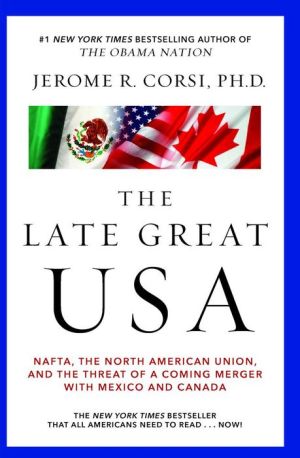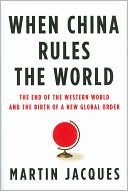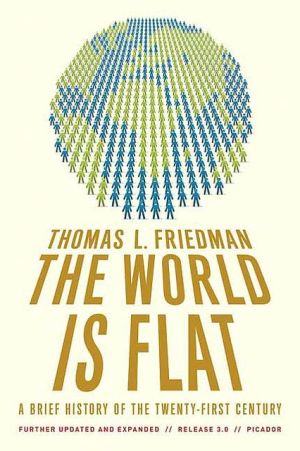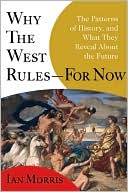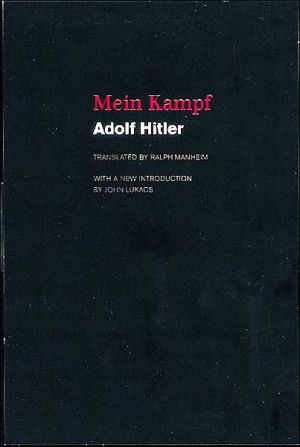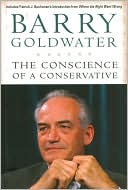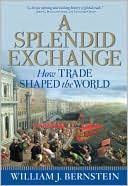The Late Great USA: NAFTA, the North American Union, and the Threat of a Coming Merger with Mexico and Canada
Now in paperback, the New York Times bestseller that exposes the business and government leaders who want the United States, Mexico, and Canada to merge into a North American Union similar to the European Union.\ The European Union was put into place incrementally over fifty years, not by the citizens of the member states, but by the efforts of an intellectual elite who disguised their ultimate goal of a regional government. Today, a bloated, unelected bureaucracy rules over hundreds of...
Search in google:
The European Union was put into place incrementally over fifty years, not by the citizens of the member states, but by the efforts of an intellectual elite who disguised their ultimate goal of a regional government. Today, a bloated, unelected bureaucracy has rule over hundreds of millions of people — people who have no say over the EU's actions...or their own futures.THINK IT COULD NEVER HAPPEN HERE?Don't be so sure! According to New York Times bestselling author Jerome Corsi, it already has. The Security and Prosperity Partnership — announced in 2005 by the leaders of Mexico, the U.S., and Canada but never presented to Congress for approval — is already laying the groundwork for the merger of the three nations into a North American Union."TAXATION WITHOUT REPRESENTATION ?" THAT 'S JUST FOR STARTERS....
PART I\ NAFTA PLUS\ ONE\ FORMING THE NORTH AMERICAN UNION\ "Sovereignty is an anachronistic concept; it has been inherited from an age when kings ruled over their subjects."\ George Soros\ Incrementalism has proved to be a highly effective way of implementing social and political change. Europe, for example, experienced what might be termed a "quiet revolution" between the 1940s and the 1990s, as European leaders slowly and almost imperceptibly sacrificed national sovereignty for the concept of a European union. The process began with a formal agreement between six countries that established the European Coal and Steel Community (ECSC). As Europe integrated economically, judicial and political integration followed. North America has its own version of the ECSC in NAFTA and in the SPP (Security and Prosperity Partnership), put into place by an informal agreement between Mexico, Canada, and the United States in 2005. A North American Union is even advocated by America's own Jean Monnet — Professor Robert Pastor, who has proposed a North American currency called the "amero," and who has played a significant role in a number of meetings and conferences, closed to the public, between top American, Canadian, and Mexican officials. Who is Robert Pastor? What would the amero mean for America's economy? What exactly is the SPP and where did it begin? The first part of this book is devoted to answering these questions.\ FIRST STEPS WITH MEXICO: THE "PARTNERSHIP FOR PROSPERITY"\ On July 4, 2000, two days after winning the presidency of Mexico, Vicente Fox called for a twenty-year timetable for the creation of a North American common market. Termed his "20/20 vision," which Fox hoped would be realized by 2020, his plan for North American integration was ambitious. Fox called for the creation of a North American customs union, a common external tariff, greater coordination of policies, common monetary policies, free flow of labor, and fiscal transfers for the development of poor Mexican regions within twenty years. Referring to the model of the European Fund, Fox suggested that $10-30 billion should be invested in NAFTA to support underdeveloped regions. An international financial institution such as the Inter-American Development Bank would administer the fund. Wasting no time after his election, Fox pushed ahead with North American integration on the model of the European Union.\ On February 16, 2001, President George W. Bush and Vicente Fox met at Fox's home, Rancho San Cristobal, in the state of Guanajuanto, Mexico.3 This was President Bush's first official state visit with a foreign leader, less than one month after taking office to begin his first term. During the joint press conference that followed their meeting, both presidents spoke in general terms about a prosperity partnership between Mexico, the United States, and Canada. President Fox commented that "We have identified a renewed will for cooperation to design, together with our Canadian partners, a region guided by the search for shared prosperity." President Bush, speaking in Spanish, called Fox a "friend," and noted he felt like he was "among family" when visiting Fox's home and meeting his mother. Then, President Bush said, "I came here today to seek President Fox's views on how we can go about building on our partnership."\ Although the Rancho San Cristobal press conference made no mention of any signed agreement, the White House website published a joint statement by the two presidents. The statement referenced a "Guanajuanto Proposal," and an official White House press release claimed we were moving "Toward a Partnership for Prosperity."4 The last paragraph of the joint statement stressed, "We believe our two nations can now build an authentic partnership for prosperity, based on shared democratic values and open dialogue that bring great benefits to our people."\ President Bush was not the only one who caught Fox's 20/20 vision. Robert L. Bartley, the editor of the Wall Street Journal, also decided to lend his voice to the move for North American integration. In a Wall Street Journal editorial published July 21, 2001, Bartley wrote: "Reformist Mexican President Vincente Fox raises eyebrows with his suggestion that over a decade or two NAFTA should evolve into something like the European Union, with open borders for not only goods and investment but also people. He can rest assured that there is one voice north of the Rio Grande that supports his vision. To wit, this newspaper."\ Bartley concluded by noting that, "President Fox is nothing if not a visionary. Many scoffed at his ambition to unseat the machine that had run Mexico for generations; now they scoff at his proposals on immigration. But over the decade or two he mentioned, a NAFTA with open borders may yet prove not so wild a dream."\ At the time, these declarations of support seemed innocuous enough — not much more than an expression of friendship between two neighboring nations. In retrospect, however, the language "partnership for prosperity" should have lit a signal that a move toward more formal economic and political integration was afoot. The phrase, somewhat modified, was to reappear in an expanded form after the tragic 9/11 terrorist attacks later that year.\ On September 5 and 6, 2001, just a few days before the 9/11 terrorist attacks, President Fox traveled to Washington, D.C., for a state visit at the White House. This visit got off to a rocky start, however, when President Fox issued a challenge to President Bush to develop a plan for legalizing all Mexicans in the United States by the year's end. In making this suggestion, Fox was pushing an amnesty, a politically unpopular idea that no American president could openly support. In private meetings, the two leaders hit on prosperity as the theme to present as a public summary of their discussions. The idea was that generating prosperity in Mexico might reduce the need for Mexico's impoverished millions to cross the American border in search of jobs. The United States could also stress that Mexican labor was needed for advancing American prosperity. During their discussions at the White House, President Bush proposed an idea he wished to advance: namely, that public-private alliances would be needed to involve private investment capital in the effort to spur private sector growth to develop Mexico economically.\ The two leaders decided to term the outcome of their discussions as the Partnership for Prosperity Initiative. The final joint press release called on "senior-level" coordinators on both sides to "draw on the best expertise among Mexican and U.S. economists, businesspeople, and civil society" to develop a concrete plan of action to be presented to the presidents by March 1, 2002. The goal was to identify investments that would stimulate job growth in Mexico, thereby creating an environment where Mexicans could economically survive in their own country rather than illegally entering the United States for work.\ Over one hundred experts from the public and private sector attended two conferences held later that year — one in Mérida, Mexico, and the other in Washington, D.C. According to a State Department "fact sheet" published on March 22, 2002, Deputy Treasury Secretary Kenneth Dam and Under Secretary of State Alan Larson led the U.S. effort. The Partnership for Prosperity action plan identified specific economic investments that could stimulate housing, commerce, and small business in Mexico.\ These two conferences assumed that North American integration was for the good of all involved and that defining a path for Mexican immigrants to obtain American citizenship was politically preferable to outright amnesty for the millions of Mexican immigrants already illegally in the United States.\ THE COUNCIL ON FOREIGN RELATIONS TAKES CENTER STAGE\ The terrorist attacks on 9/11 added the issue of security to the then-emerging Partnership for Prosperity with Mexico. Interestingly, this development even more closely parallels the initial stages of the European Union. World Wars I and II drove the formation of the European Coal and Steel Community — an organization that is commonly viewed as one of the first significant precursors to the EU. Twice in the first half of the twentieth century, Germany had wreaked havoc on neighboring countries by trying to dominate Europe. Proponents of economic integration — and ultimately political integration — wanted to make Germany's economic welfare interdependent on other nations, specifically France, in hopes that this union would prevent further warfare. That was, at least, the proximate cause. Developments in a regional direction led to the diminishing of national sovereignty of all parties involved.\ On October 17, 2001, the Council on Foreign Relations (CFR) held a roundtable meeting in Atlanta, Georgia, under the title "The Future of North American Integration in the Wake of the Terrorist Attacks." This was the beginning of including "security" in what had previously been only identified as a partnership for prosperity between Mexico and the United States. Also, the CFR language redefined the partnership to be "North American," thus including Canada for the first time. The meeting proceeded under the assumption that NAFTA's "limits have been reached" and that what is now needed is an "institution that thinks about these problems in a continental role."\ Since its formation in 1921 from the group of academics who advised President Wilson about post-war Europe, the CFR has seen the formation of international organizations as essential to world peace. The failure of the League of Nations to prevent World War II did not dissuade the CFR about the effectiveness of international organizations. Instead, the failure of the League of Nations elicited renewed resolve from within the CFR to establish the United Nations after World War II as a "new and improved" version of the League of Nations. Under the sponsorship of David Rockefeller, the CFR continues today to press for the United States to accept international solutions, including the promotion in the Western Hemisphere of North American regional integration as a necessary successor to NAFTA. Consistently, the CFR has an impact on the language and thought around which U.S. foreign policy is formed.\ The CFR roundtable held in Atlanta stressed the importance of a transportation infrastructure in advancing the integration of North America:\ The deepening of NAFTA means greater coordination or harmonization of policies. Thinking continentally for transportation and infrastructure would facilitate economic cooperation and integration.\ The group recommended establishing an advisory North American Commission to set the agenda for future summit meetings between the leaders of the United States, Mexico, and Canada.\ A TASK FORCE ON NORTH AMERICA'S FUTURE\ On October 15, 2004, the CFR created an independent task force on the future of North America. The task force was headed by former Canadian Deputy Prime Minister and Minister of Finance John P. Manley; former Minister of Mexico Pedro C. Aspe; and former governor of Massachusetts and Assistant Attorney General William F. Weld. The task force consisted of prominent government officials and business leaders from the three countries, each of whom had an established history of supporting North American integration. The three vice chairs of the task force were all strong proponents of North American integration: Thomas d'Aquino, chief executive of the Canadian Council of Chief Executives; Andres Rozental, president of the Mexican Council on Foreign Relations; and Robert A. Pastor, then identified as president of international affairs at American University.\ In March 2005, the CFR task force issued its first report, a chairmen's summary entitled "Creating a North American Community." The Consejo Mexicano de Asuntos Internacionales (COMEXI) and the Canadian Council of Chief Executives (CCCE), two groups also on record as supporting North American integration, issued the report together with the CFR. The CFR intentionally published the report before the trilateral summit planned for later that month in Waco, Texas. The CFR expected the Waco summit to be a defining moment in U.S.- Mexican-Canadian relations and the intent was to issue prior to the meeting the CFR's recommendations of what the summit should accomplish.\ The report reflected the consensus of the task force's three chairs and three vice chairs:\ To build on the advances of the past decade and to craft an agenda for the future, we propose the creation by 2010 of a community to enhance security, prosperity, and opportunity for all North Americans.\ This was the first time that a specific date was set for North American integration: 2010, only five years forward from the publication of the task force report. Also, the word "security" was added to the prosperity formula. What President Bush and President Fox previously specified in San Cristobal as a "partnership for prosperity" became, after 9/11, a "security and prosperity" partnership.\ Building on the theme of a terrorist security threat to North America, the CFR task force called for the creation of a security border around the continent. This was a fundamental shift away from defining national borders as key to protecting against terrorism. In other words, from a North American perspective, the CFR was suggesting that the three North American nations would primarily screen foreigners entering North America. This shift implied that the United States, even in the face of a foreign threat of terrorism, would not rely primarily on a secure border with Mexico and Canada — even to keep terrorists out of America herself.\ Simultaneously, the CFR task force suggested that the borders between the United States and Mexico and between the United States and Canada be largely opened in the pursuit of regional economic prosperity. The task force clearly pushed for a North American common market:\ We focus our recommendations on the creation of a single economic space that expands the economic opportunities for all people in the region, and the establishment of a security zone that protects the region from external threats while facilitating the legitimate passage of goods, people, and capital.\ Open borders with Mexico and Canada would allow "migration" of "North Americans" (the citizens of the United States, Mexico, and Canada), relatively free passage across North American borders, provided the travelers presented the proper "North American" documents.\ The task force supported their North American focus with the following three specific recommendations:\ To adopt a common North American external tariff by "harmonizing" tariffs to the lowest possible rate between Mexico, Canada, and the United States;\ To develop a North American Border Pass with biometric identifiers to expedite passage through customs, immigration, and airport security throughout North America;\ To establish a North American Investment Fund to stimulate infrastructure development in Mexico.\ The goal was to transform NAFTA into a European Union-type customs union, to redefine the border as continental rather than national, and to develop Mexico economically as a precondition for integration with the larger, more developed economies of the United States and Canada.\ This CFR "Chairmen's Statement" noted that a full report would be issued by the task force, following the March 2005 trilateral summit in Waco, Texas, "to take full stock of the results of the Texas summit and reflect the views of the full task force membership."\ THE WACO DECLARATION\ On March 23, 2005, at the conclusion of their Waco summit, the three North American leaders declared their participation in the Security and Prosperity Partnership of North America.\ With this announcement, the United States, Mexico, and Canada entered into a new era, even if the public of the three countries did not fully comprehend the importance of the declaration. To implement the Security and Prosperity Partnership (SPP), the three leaders decided that bureaucrats from the three nations would create "working groups" tasked with "integrating" and "harmonizing" the administrative law and regulatory structures of the three nations in a broad range of public policy areas. "Working groups" is a term commonly used in the European Union to describe the bureaucratic entities that run the EU from behind closed doors in Brussels and Luxembourg. Working groups were constituted at the Waco summit to put in motion the creation of a continental set of administrative rules and regulations the bureaucrats in the three nations would use to set continental public policy within the legal structure of their three countries, a feat to be achieved by "memoranda of understanding," not laws or treaties.\ The Waco Declaration also included several additional language conventions common in the European Union. When the working groups were constituted, cabinet-level officers in each government were assigned to oversee their work. In the United States, the cabinet members were Secretary of State Condoleezza Rice, Secretary of Homeland Security Michael Chertoff, and Secretary of Commerce Carlos Gutierrez. Yet the Waco Declaration referred to these cabinet level officers not as "secretaries," but as "ministers," a term commonly used in Europe. Similarly, the Waco Declaration said the working groups would report to "the leaders," a generic specification that avoided referring to the president of the United States, the president of Mexico, or the prime minister of Canada.\ The White House website archived several photographs of the three leaders, generally with President Bush positioned in the middle, with a backdrop of their three national flags. Three nations working together as one was the subtext of the entire press conference. Mosaics of the three flags were even on display, further emphasizing the three-country theme. Also showcased for the first time was a new logo — a stylized map of North America against a blue background with the words "Security and Prosperity Partnership of North America" written across the center. The logo displayed no distinct borders between the United States and Mexico or between the United States and Canada. The logo emphasized a circle drawn around North America, calling attention to a continental vision. This new logo quickly became the official logo of the Security and Prosperity Partnership of North America.\ This Security and Prosperity Partnership of North America (SPP) was never submitted to Congress for debate and decision. There was no law passed by Congress, no law signed by the president, and no treaty ratified by the Senate. Evidently, the three leaders never signed anything. So, at most, the legal status of the SPP was that of a press conference. The major accomplishment of the Waco Declaration was to mandate the creation of trilateral working groups, in effect creating a new trilateral government structure of U.S. bureaucrats working behind closed doors with their bureaucratic counterparts in Mexico and Canada.\ This trilateral working group structure was never expected to show up on the formal organizational chart of the three governments. This way, if the public or the press questioned what the working groups were doing, the answer was simple — the working groups were just engaging in a dialogue between three countries who are friendly neighbors. The substance of the working group work would be produced in countless boring documents too technical or too legal for the average person to comprehend.\ Curiously absent in the Waco Declaration was any distinct mention of the United States of America. Very subtly, the USA was transformed into an SPP partner on a level basis with their two partners in North America. Even in the press conference following the summit, the three leaders emphasized "North America" and stressed their goals as "advancing our common security and our common prosperity." In a twist of semantics, the focus shifted to North America. Gone were distinct references to the three sovereign and distinct nations of the United States of America, Mexico, or Canada.\ The Waco Declaration called for the working groups to report to "the leaders" in ninety days:\ Within 90 days, Ministers will report back to us with their initial report. Following this, the groups will report on a semi-annual basis. Because the Partnership will be an ongoing process of cooperation, new items will be added to the work agenda by mutual agreement as circumstances warrant.\ This March 23, 2005, Waco, Texas, joint statement ended with a Bobby McFerrin-like, " Don't Worry, Be Happy" directive:\ Through this Partnership, we will ensure that North America remains the most economically dynamic region of the world and a secure home for our people in this and future generations.\ The unchallenged assumption was that North American integration was the solution to continental security and prosperity.\ THE COUNCIL ON FOREIGN RELATIONS ADVISES SPP — "TOWARD A NORTH AMERICAN COMMUNITY"\ As promised, the Council on Foreign Relations (CFR) Independent Task Force on the Future of North America issued its full report in May 2005, only two months after the Waco summit meeting.\ The CFR report was entitled "Building a North American Community." From virtually the first page, the CFR report declared itself the blueprint for the plan behind the Security and Prosperity Partnership. The final CFR task force report began by referencing the Waco meeting:\ At their meeting in Waco, Texas, at the end of March 2005, U.S. President George W. Bush, Mexican President Vicente Fox, and Canadian Prime Minister Paul Martin committed their governments to a path of cooperation and joint action. We welcome this important development and offer this report to add urgency and specific recommendations to strengthen their efforts.\ The CFR task force then openly volunteered their willingness to advise SPP:\ In March 2005, the leaders of Canada, Mexico, and the United States adopted a Security and Prosperity Partnership of North America (SPP), establishing ministerial- level working groups to address key security and economic issues facing North America and setting a short deadline for reporting progress back to their governments. President Bush described the significance of the SPP as putting forward a common commitment "to markets and democracy, freedom and trade, and mutual prosperity and security." The policy framework articulated by the three leaders is a significant commitment that will benefit from broad discussion and advice. The Task Force is pleased to provide specific advice on how the partnership can be pursued and realized.\ The CFR Independent Task Force on the Future of North America repeated the earlier statement of the CFR Chairman's Statement that 2010 was an important date:\ The Task Force's central recommendation is the establishment by 2010 of a North American economic and security community, the boundaries of which would be defined by a common external tariff and an outer security perimeter.\ So, by 2010 the only borders or tariffs remaining in North America would be those around the continent, not those between the countries within:\ Its [the North American Community's] boundaries will be defined by a common external tariff and an outer security perimeter within which the movement of people, products, and capital will be legal, orderly, and safe. Its goal will be to guarantee a free, secure, just, and prosperous North America.\ The rationale behind the Waco Declaration parallels the reasons given for creating the EU. Just as economic and security concerns were the ostensible rationale behind the EU, so are economic and security concerns behind the push to create the SPP. Just as venerable nationalist identities were subsumed under the new "European consciousness," so the SPP agreement risks our uniquely American identity in favor of a North American consciousness. While the end result of the SPP is not yet known, much suggests that it may take the first step toward formalizing a union between the United States, Canada, and Mexico. We can gain additional insight into the purpose of SPP by examining the thinking of Robert Pastor, one of the primary architects of what he envisions as a "North American community."\ Copyright © 2007 by Jerome R. Corsi, Ph.D.
Illustrations ixForeword xiIntroduction 1Part I NAFTA PlusOne Forming the North American Union 11Two Meet Robert Pastor 25Three The Amero 46Four Secret Meetings, Formal Councils 59Part II Building the North American CommunityFive The SPP Shadow Government 85Six The Trans-Texas Corridor 102Seven Public-Private Partnerships 131Part III The Effects of Globalist Policy on AmericaEight Red China Opens Port in Mexico 149Nine The USA in Twilight 169Ten Cheap Labor and Cheap Money 189Conclusion 209Epilogue 221Acknowledgments 237Appendices 239Notes 255Index 293
